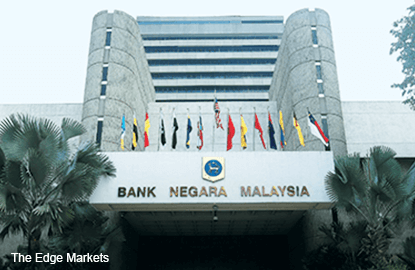
BANK Negara Malaysia has intensified its watch on local banks. Some quarters opine this could be because of a lapse of controls in certain areas at some banks. Others believe it is a global trend for regulators to keep a close eye on financial institutions to prevent criminal activities such as money laundering.
When contacted, top bank executives reveal that the central bank’s officers are stationed at some banks to observe their operations for a longer period than usual — something that has not happened in recent years.
“The officers sit in with the bank staff and observe how work is being done. They are also looking at the funding flow. These officers are placed in some departments of banks for a couple of weeks to even months. That is a long time,” says a head of department at a local bank, adding that it involves compliance monitoring as well.
Although this could be a hassle for bank employees, many comment that it is a necessary move to ensure the stability of the country’s financial system.
When contacted on this, Bank Negara declined to comment.
In its Financial Stability and Payment Systems Report 2015, Bank Negara notes that banks with weak AML/CFT (anti-money laundering and countering the financing of terrorism) systems “will be subjected to closer and more intensive supervision and enforcement action by the central bank”.
According to a bank director, this is a fairly recent development as Bank Negara previously sent its officers to banks for a short period for monitoring purposes.
“Bank Negara also sent officers over to banks on attachment, for example, when there are new products and markets … and it was usually for two weeks maximum. Like, for example, these officers from the central bank join the trading offices of the banks to gain some exposure and to see what they do,” explains the director.
The CEO of a banking group observes that there has been an acceleration in inspections by Bank Negara.
“There has been a lot of inspections … and these cover quite a broad range of things, from AML to compliance,” he says, adding that such action is necessary to keep the domestic banks and banking system in check.
“It is more work for us as there are times when we have to do additional reporting but it is good as it safeguards the integrity and stability of the whole banking system,” he comments.
According to the Asia/Pacific Group on Money Laundering’s Yearly Typologies Report 2015, most of the money laundering cases in Malaysia in that year were related to drugs, smuggling, corruption, fraud/scam, customs duties and tax evasion.
It adds that this is also in line with high-risk threats identified by Malaysia’s National Risk Assessment, which was completed in June 2014.
According to a board director at a financial service provider, the irony is that banks are getting more regulated today whereas technology players that want to tap the financial industry are free to roam.
“Regulation should be consistent with and relevant to the whole financing industry and not just banks. This is to ensure that it doesn’t lead to a credit bubble… this will be in the best interest of consumers and corporates,” the director comments.
A senior investment banker points out that an increase in regulatory monitoring of financial institutions is not just happening in Malaysia but everywhere.
“Regulation is only going to get tighter going forward. It is the reality today and that is happening all over, not just here.
“Regulators are taking a more serious stance and that is understandable … there are a lot of concerns about the economy and liquidity flows. Compliance and risk management are at the top of their agendas,” he says.
Just last month, New York authorities slapped Taiwan’s Mega Financial Holding Co Ltd and its banking unit with a US$180 million fine for anti-money laundering violations.
The fine was for violations that included lax attention to risk exposure in Panama, the first time in a decade that a Taiwan-based financial institution was penalised by the US authorities.
On Sept 16, Deutsche Bank said the US Department of Justice had asked it to pay US$14 billion for mis-selling mortgage-backed securities.
The announcement rattled the entire banking sector, raising fears that other London-listed banks may be fined similarly.
At home, Bank Negara prosecuted 182 cases of criminal offences and obtained six court orders last year, requiring entities and individuals to cease illegal activities. In the same year, RM69.5 million in fines were imposed on licensees for regulatory breaches relating to over 240 offences identified under the laws administered by the central bank.
Also last year, Bank Negara opened 26 new investigations into suspected illegal activities and regulatory breaches.
In its 2015 Financial Stability and Payment Systems Report, the central bank says it has progressed its internal initiatives to better integrate financial intelligence with its prudential supervision of banking institutions.
“This involves developing a structured process to incorporate, in a consistent way, results from annual AML/CFT assessments and analyses of trends and patterns in the bank’s risk-based supervisory framework. Such an integrated approach aims to leverage the bank’s supervisory activities more effectively to support timely interventions by the bank to pre-emptively address AML/CFT weaknesses identified in banking institutions,” it states.
Save by subscribing to us for your print and/or digital copy.
P/S: The Edge is also available on Apple's AppStore and Androids' Google Play.